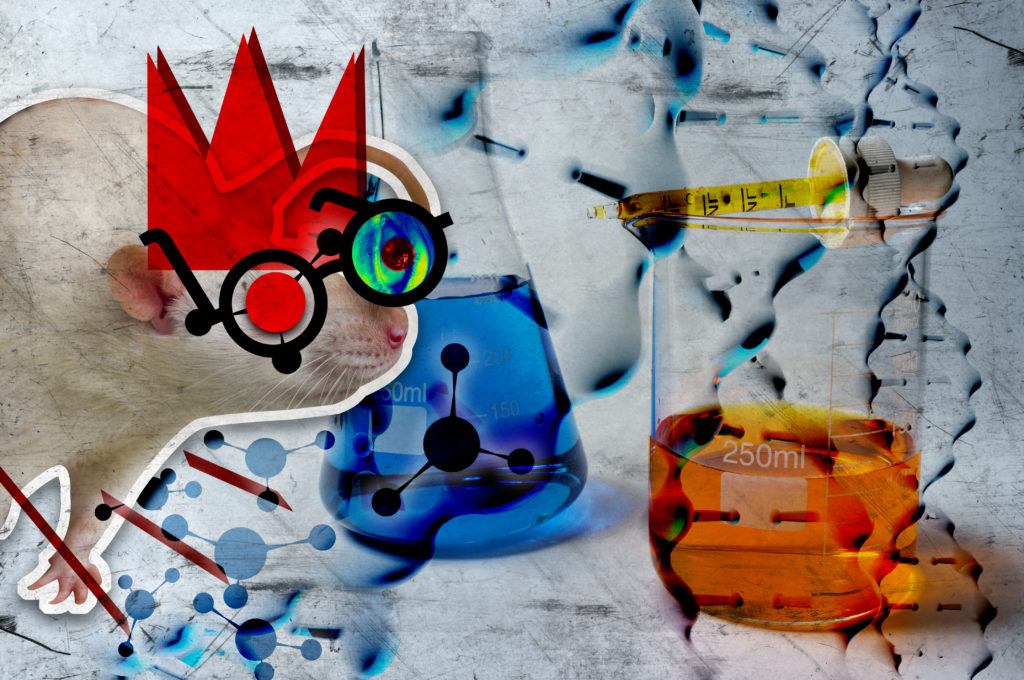
Few research methods from the first era of psychedelic science remain in use today. Informed consent has become requisite for human studies, neuroimaging has advanced dramatically, and innovative new ways to screen and test compounds have been developed. But one animal model first introduced in the 1960s is still widely employed, and according to experts also destined to play a continued role in this rapidly evolving field.
The head-twitch response is a rapid, side-to-side movement of the head and neck in rodents, especially mice, that occurs upon activation of the 5-HT2A receptor — the same receptor, of course, that is the key target of serotonergic psychedelic drugs like LSD and psilocin.1,2 Thus, while not a direct correlate, the head-twitch response (HTR) serves as an indicator of potential psychedelic effect in humans.3
Somewhat incredibly given how much has changed in psychedelic science and the broader realms of pharmacology and neuroscience, that is precisely how the HTR was characterized in a landmark 1967 Psychopharmacologia paper titled “A possible correlation between drug-induced hallucinations in man and a behavioural response in mice.”4 (The response itself was first described 11 years earlier, though not as a tool for predicting subjective effects in humans.)5
In the decades since, amid its ongoing use as a tool to help answer a variety of pharmacological and neurological questions, researchers have parsed and puzzled over the particulars of the HTR. They have studied differences in how the response manifests in various species of mice and rats. They have investigated potential false positives (the appetite suppressant and seizure drug d-fenfluramine, for example, is non-hallucinogenic but elicits the head twitch)6 and false negatives (older mice produce the HTR less reliably).7 They have uncovered evidence of modulation by other target receptors, particularly 5-HT2C.8 They have tried, so far unsuccessfully, to identify the precise neural circuitry underlying the HTR.
But none of these uncertainties or apparent limitations threaten its continued use as a basic pharmacological assay for 5-HT2A activation and potential psychedelic effect in humans, says Adam Halberstadt, an assistant professor of Psychiatry at the University of California at San Diego who is recognized as one of the world’s leading experts on the HTR.
“Over the years, HTR data have been collected for many different purposes using a wide range of approaches and experimental designs,” Halberstadt explained to Psychedelic Science Review. “Because of that heterogeneity, erroneous and conflicting findings have sometimes been published in the literature. But the heterogeneity tells us little about the limitations of the specific approaches that are currently being used in HTR experiments.”
In other words, he clarifies, if the goal is to assess whether new chemical compounds activate 5-HT2A receptors in vivo (in live animals); how their potency compares to other 5-HT2A agonists; and what their likelihood of producing LSD-like psychedelic effects in humans is, the HTR assay (particularly when paired with in vitro/“test tube” pharmacological assessment) has grown more useful over the years, not less.
“HTR works very well for those purposes, and is faster, cheaper, and more effective than other behavioral approaches that could potentially be used to answer the same research questions,” Halberstadt says. “So there isn’t really any reason why the use of HTR would change going forward.” In recent years Halberstadt himself has helped secure the assay’s future by developing sophisticated techniques for automated counting of head twitches that offers improved reliability and throughput versus manual counting.1,9
Clinton Canal, an assistant professor of Pharmaceutical Sciences at Mercer University and authority on the HTR who has used it to study drug effects on the 5-HT2C receptor and interactions between 5-HT2A and 5-HT2C,10,11 agrees that the assay is here to stay. He predicts that going forward, automated techniques such as those developed by Halberstadt’s team are likely to be relied upon by pharmaceutical companies, while manual counting may persist in some academic settings.
Further evidence of the HTR’s continued appeal can be found beyond the pages of scientific journals – such as at the recent, first-of-its-kind National Institutes of Health workshop on psychedelics as therapeutics. Alongside presentations of cutting-edge research methods and findings, Canal discussed and fielded questions about the decades-old assay and what it can tell us about new drugs. And just one month prior, popular journalist and chemist Hamilton Morris produced a podcast episode exclusively about the HTR. As psychedelic science moves into a new era with renewed prospects for federal support, the still-mysterious head-twitch response will play an important part.

So its sensitive but not specific. We have no idea what these animals are going through, so seems pretty useless for the subjective psychedelic experience or for the specific pharmaceutical action